.
When I was a child, we had a vegetable garden of about 40 square meters. Seeing that we were six people and Granny also had a patch for her and Gramps, it was a relatively small garden. Yet, it produced most of our vegetables, and we rarely had to buy any from the supermarket.
Today, my mom is still an avid gardener, but she cultivates only two raised beds for her and my dad, which is plenty of work for an octogenarian. Surprisingly enough, like before, those beds (and a few pots) provide them with most of their veggies throughout the growing season. That shows that a small space is no excuse for not starting a vegetable garden! Let me show you how you can also have a huge harvest in your small space vegetable garden.
Small vegetable gardens: Choose your site
If you have already established patches or raised beds to grow vegetables, that’s fine. But if you’re just starting, there are a few things to observe.
Location
Vegetables need light to grow. It doesn’t matter if you have a small garden with a tiny bed or just some pots on a patio, as long as your veggies get enough sunshine, they’ll be fine.
Inventory
Take inventory of what plants already grow in your garden and use the different growing heights to your advantage. If you have some shrubs and bushes, for example, you could plant herbs which grow smaller, on the south of them and proceed with vegetables. That way, you can cultivate fruits, herbs and vegetables in a comparatively small space.
Patches and Co.
If you have the opportunity you can create some garden patches with this easy method (no need to dig, I promise!). But even if a coherent gardening space isn’t possible, maybe you can create “pockets” within your garden, which means single patches scattered throughout your soon-to-be small vegetable garden.
Raised beds may be a good idea, no matter if you have a garden, patio or just a balcony.
Last but not least, pots and containers fit on the tiniest balcony. You’ll be surprised to see what you can grow in pots!
Dreaming your small vegetable garden
Every garden, even a small one, needs a plan! I know it can be tedious to create one, but I promise you it’s worth it.
Choosing vegetables
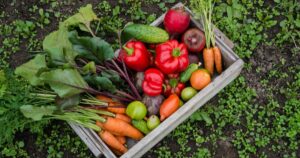
To make a plan, however, you must decide first what vegetables you want to grow. Make a list with all the veggies you like AND which don’t require too much space.
Good, and beginner-friendly, examples are Swiss chard, Chinese cabbage, peas, beans, leeks, carrots, garlic, onions, kohlrabi, radishes, turnips, beetroot, stalk celery, lettuce and lamb’s lettuce.
For a small vegetable garden, it’s also clever to choose vegetables that grow vertically rather than horizontally. Runner beans, for example, that grow upwards on trellises, may be a better option than bush beans, which require much more space.
If you have one or two vegetables that you absolutely want to have, although they normally need too much space, include them in your plan. Growing our own food should be fun, and not a way to limit ourselves. Growing them in pots is usually a great option.
Look for high-yielding vegetables that produce a huge harvest. Good examples are zucchini, carrots, onions and tomatoes.
Make sure you cultivate varieties that are robust and well-adapted to your climate and hardiness zone, and prefer heirloom and resistant varieties.
Choose vegetables that are easy to cultivate like lettuce, Swiss chard, garlic and beetroots.
It’s also good to have vegetables that grow fast, like radishes, beets, Swiss chard and spinach and veggies you can harvest for a long time, like lettuce, runner beans, leek, stalk celery and kale.
Small vegetable garden: Make a cultivation plan
Now that you have your list of vegetables, it’s time to make a plan. If you have patches or raised beds, draw them on paper and outline which plants you want to grow where. To make the best of your space, combine high and low-growing plants.
The right combinations
Randomly mixing vegetables can work, but usually, it won’t. It’s good, therefore, to know which plants to grow together and how to combine different veggies.
Companion planting
Also, bear in mind which plants like each other (and which don’t). Like with humans, plants have special friends whom they grow great together with and others they can’t stand. You’ll find a list of vegetables and their best buddies in this article about companion planting.
Crop rotation
Even in small vegetable gardens, you should observe the principles of crop rotation, which divides vegetables either by family, category or nutrient uptake and rotates them every year. That way, the soil stays healthy and pests and diseases can’t spread easily. For a comprehensive outline on crop rotation, including exemplary rotation plans, hop over here.
Succession planting
Whenever we harvest a plant (or plants), we should immediately sow or plant afterwards. That not only makes sure that the soil is always covered but we can also harvest continually throughout the season. Find examples for succession planting in the vegetable garden in this article.
Soil preparation
Now that we have a plan, we prepare our patches. No matter the kind of patches or pots we have to grow our vegetables in, soil preparation is essential for a good harvest. And what would be better than
Compost
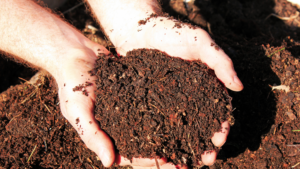
Compost is a universal remedy. It improves the soil structure, stores water, provides nourishment for the soil organisms and nutrients for the plants.
A generous layer of compost on the soil is a great method to ensure a huge harvest.
“Homemade” compost is certainly best, but if you don’t have enough “homemade” compost, I recommend buying some from a composting plant. It’s usually of better quality than the stuff in plastic bags you can buy in the supermarket, and it’s cheaper.
Manure
If you have livestock and use their manure for the garden, the soil will become increasingly fertile with time. Chicken manure, for example, is a marvelous fertiliser.
Horse manure has less nutrients than other manure, but the nutrient content is very balanced. Yet, no matter what animals you have: your garden will profit from their manure in any case.
Even if you don’t have any livestock, you can ask on farms, horse stables, or other animal owners if you can have some manure for your garden.
The only thing you have to keep in mind is that fresh manure is usually too „hot“ for most plants, and they would burn. For that reason, you must compost it before you can use it in your garden.
Cultivating your small vegetable garden
Made a plan: check
Prepared the soil: check
Now we can plant!
Intensive cultivation
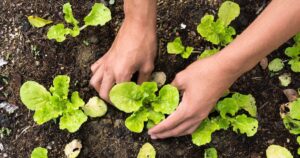
When you use compost to enhance your soil’s fertility, you can plant your vegetables more closely than indicated on the seed packages. Especially leafy vegetables can be planted closer together and a smaller planting distance means a higher yield.
Another example is head cabbage, which needs a lot of space as it grows relatively expansive, and we should plant it with the right spacing.
Normally.
We can intensify the space yield, however, when we plant leeks between the cabbage rows. The cabbage grows on the ground and leeks at the “first floor” without them getting in each other’s way.
Pots and containers
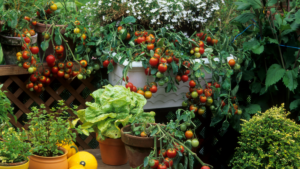
For most gardeners, tomatoes and cucumbers are a must-have. Unfortunately, they require a comparatively large space to grow healthily and bring a good harvest. Instead of growing them in our patches or raised beds, therefore, we plant them in pots and containers. Just make sure that the pots are large enough and that you put them in a protected, sunny spot.
Attract pollinators in small vegetable gardens
Fruiting vegetables like tomatoes and cucumbers, but peas and beans, as well, need insects to pollinate them. To attract these pollinators, it’s a good idea to plant blooming herbs or (edible) flowers like calendula or nasturtium between our veggies or around the patches. Bees and other pollinating insects will love them, and as a thank you, pollinate your veggies.
Harvest
Many gardeners hesitate when it comes to harvesting, but harvesting is our goal, isn’t it?!
When you cultivate vegetables that can be harvested for a long time, like lettuce, runner beans, leek, stalk celery and kale, make sure to harvest them continually throughout the season. That way, you drive them to grow more leaves or fruits.
As soon as you have harvested any veggies completely, sow or plant immediately afterwards so that the next batch of veggies is on its way.
Having fewer vegetables makes us want to use more parts of them. Did you know, for example, that you can mix the leaves of beetroots, carrots and Florence fennel with your lettuce? Or that the leaves of radishes make a wonderful pesto? You can also cut off garlic greens and put them in your salad or cook with them. They have a mild garlic taste and improve every dish.
Lastly, why not harvest edible wild plants that grow in your garden? One of the most dreaded weeds, goutweed, for example, can be perfectly baked into pancakes or used up for a wild herb pesto.
The leaves of stinging nettle can be mixed with spinach or cooked into a soup.
Dandelion flowers can be cooked into a thick syrup, the dandelion honey, while the young leaves in a spring salad are great for the liver.
Not enough garden talk yet?
These articles may also interest you:
Beginner’s guide: How to start a vegetable garden
Natural fertilisers from animals
Easy Vegetables for Beginners: 11 Foolproof Crops for Your First Garden in 2025
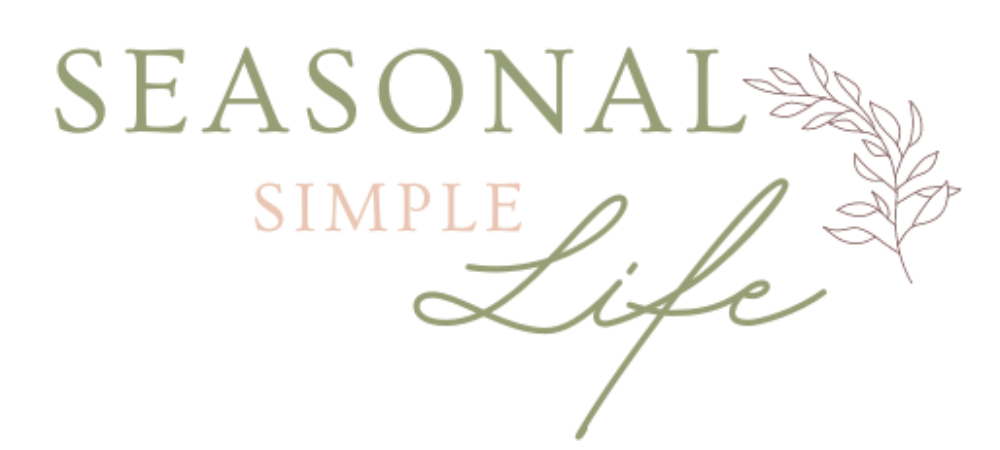
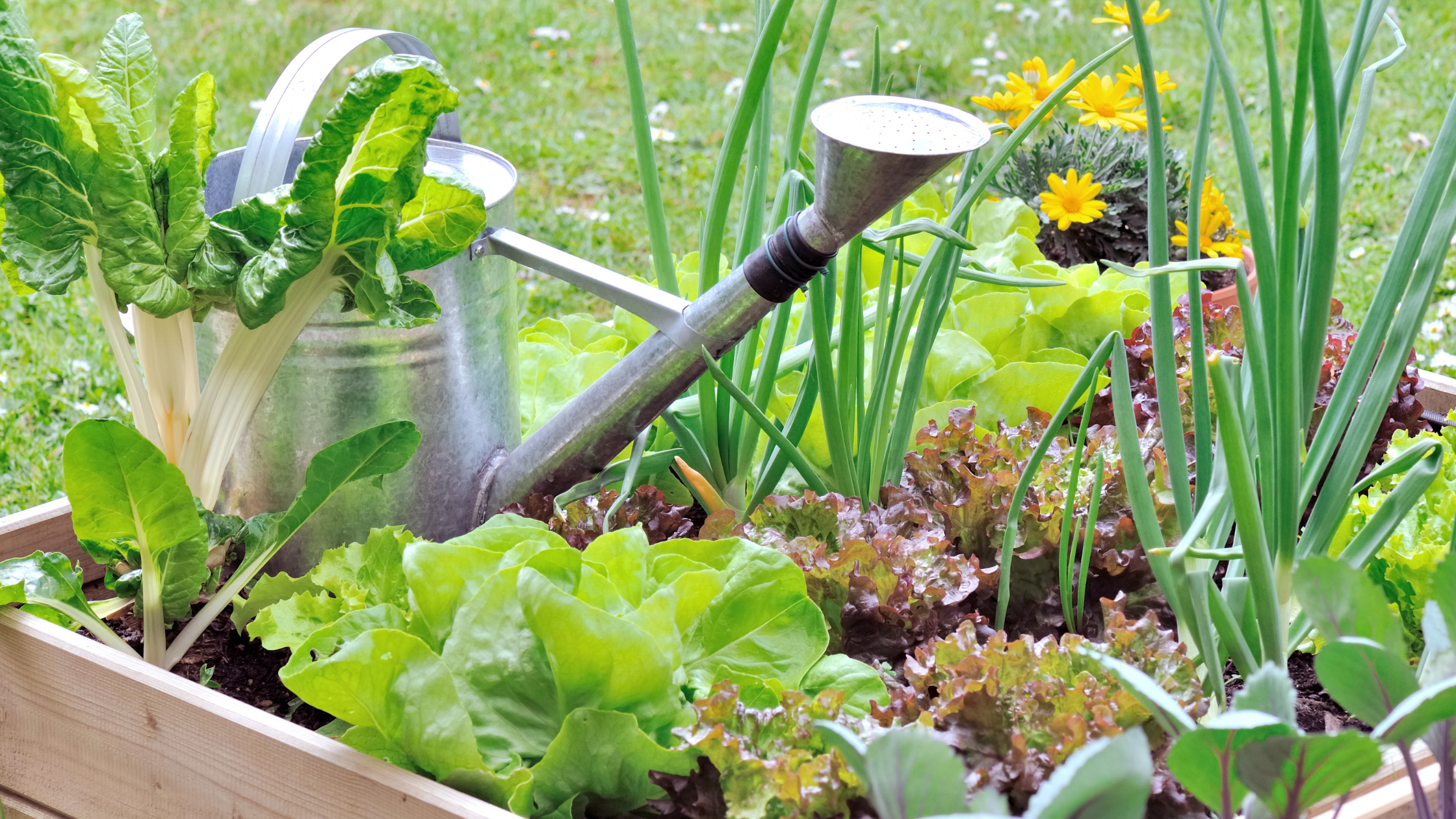
0 Comments